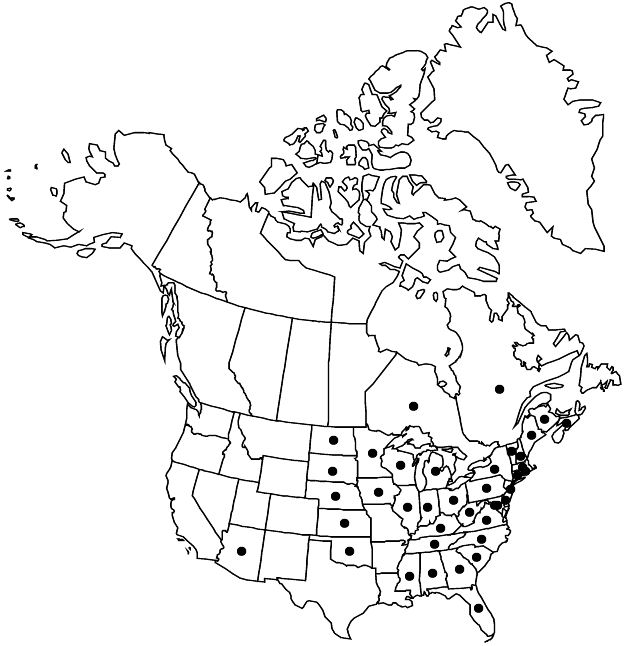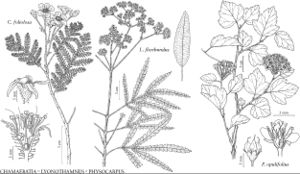Physocarpus opulifolius
Trudy Imp. S.-Petersburgsk. Bot. Sada 6: 220. 1879.
Shrubs, to 30 dm. Stems spreading to ascending, ± glabrous. Leaves: stipules narrowly ovate, 6–10 × 1.5–2.5 mm, apex acute; petiole 1–3 cm; blade ovate to obovate, 6–8.5 (–10) × 4–7 (–10) cm, usually longer than wide, base broadly cuneate to truncate, 3 (–5) -lobed, margins irregularly serrate, apex obtuse to rounded, surfaces mostly glabrous, sometimes sparsely hairy abaxially. Inflorescences 30–50-flowered, open, hemispheric racemes, 5 cm diam.; bracts elliptic to spatulate or rhombic, 5 × 2.5 mm, apex acute to 3-fid or coarsely erose, faces glandular. Pedicels 1–2 cm, usually stellate-hairy. Flowers 7–10 mm diam.; hypanthium cupshaped, 1.5–2 mm, glabrous or sparsely stellate-hairy; sepals pale green to white, darker in center, triangular, 1.5–2.5 mm, apex mucronate, gland-tipped, surfaces usually stellate-hairy; petals white to pale-pink, broadly elliptic to orbiculate, 4–5 × 4–5 mm; stamens equal to or exceeding petals, anthers purplish; carpels 3–5, connate basally, sparsely stellate-hairy, glabrescent. Follicles 3–5, connate basally, bright red to brownish red, ovoid, 5–10 mm (lengths ca. 2 times sepals), sparsely stellate-hairy, ± glabrescent; styles 4 mm. Seeds 2 (–5), pyriform, 2 mm. 2n = 18.
Phenology: Flowering May–Jun; fruiting Jul–Sep.
Habitat: Rocky stream banks, lake shores, moist woods, swampy ground
Elevation: 0–1300 m
Distribution

N.B., N.S., Ont., Que., Ala., Ariz., Conn., Del., D.C., Fla., Ga., Ill., Ind., Iowa, Kans., Ky., Maine, Md., Mass., Mich., Minn., Miss., Nebr., N.H., N.J., N.Y., N.C., N.Dak., Ohio, Okla., Pa., R.I., S.C., S.Dak., Tenn., Vt., Va., W.Va., Wis., in Europe
Discussion
Physocarpus opulifolius is the most widespread species in the wild and is commonly cultivated in North America and Europe; it occasionally escapes from cultivation and has become established in parts of Europe.
Selected References
None.
Lower Taxa
"dm" is not declared as a valid unit of measurement for this property.
